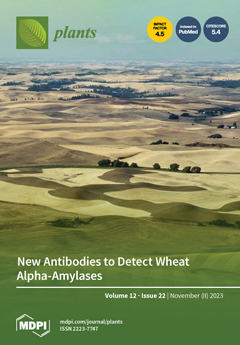The presence of high levels of secondary metabolites in medicinal plants can significantly influence the progress of drug development. Here, we aimed to maximize phenolic extraction from
Adenanthera pavonina L. stem bark using various solvents such as ethyl acetate, methanol, petroleum ether, and
[...] Read more.
The presence of high levels of secondary metabolites in medicinal plants can significantly influence the progress of drug development. Here, we aimed to maximize phenolic extraction from
Adenanthera pavonina L. stem bark using various solvents such as ethyl acetate, methanol, petroleum ether, and chloroform. A response surface method (RSM) with a central composite design (CCD) statistical technique was applied to optimize the extraction process, employing three important extracting parameters such as extraction time (h), temperature (°C), and solvent composition (%
v/v of methanol/water) to obtain the highest phenolic content. Total phenolic content (TPC) and antioxidant activity (IC
50 of extract’s DPPH radical scavenging activity) were used as response variables to find the influence of these extracting parameters. Among the various solvents used, methanol extract showed the highest contents of phenolics and the maximum level of antioxidant activity with a lower IC
50 value. The notable TPC and IC
50 value of the extract’s DPPH radical scavenging capacity were found to be 181.69 ± 0.20 mg GAE/g dry tissue and 60.13 ± 0.11 mg/mL, respectively, under the optimal conditions with a solvent composition of 71.61% (
v/v) of methanol/water, extraction temperature of 42.52 °C, and extraction time of 24 h. The optimized extract of
A. pavonina stem bark was further subjected to HPLC analysis, where six phenolic compounds, including coumarin, p-coumaric acid, chlorogenic acid, sinapic acid, gallic acid, and caffeic acid, were identified along with their respective quantities. Overall, the findings of this study uncover a low-cost analytical model for maximizing phenolic extraction from
A. pavonina bark with enhanced antioxidant activity.
Full article






